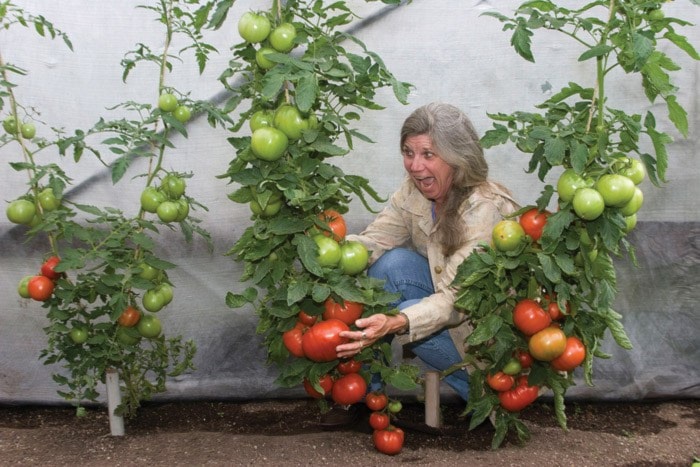There are three things that men are quite possessive about, three things that you should never really mess with if you know what’s good for you – that being their car (or truck), their hockey team, and their tomatoes.
Don’t ask me why men are so particular about growing their own tomatoes, because they certainly aren’t bending over backwards to cultivate kale, leeks or broccoli – but woe to the garden centre that fails to stock (or sells out of) their favourite tomato cultivar.
As men, we like to improve things. So when we are not impressed with our car’s performance, we simply drop a new engine into it. When our hockey team fails to win, we expect a few player trades from management (which is why you can definitely say goodbye to Luongo).
But the last fixation, the humble tomato plant, has changed very little over the years, except for a little selective breeding. The pursuit of bigger tomatoes and higher yields has been more about grow lights, special soil blends, secret fertilizer recipes and homemade greenhouses than it has been about anything else. That is, until now.
A potentially better tomato is due to arrive at your local garden centre in the next two to three weeks, called ‘Mighty ’Matos.’ These are grafted tomatoes, so there is no genetic manipulation.
Standard tomato varieties are simply top-grafted onto Solanum rootstock using a Japanese or tube-grafting method. Several different rootstocks (imported from Holland) are used, with each being chosen for compatibility, the plant’s growth rate and fruit type. Once grafted, the scion and rootstock are held in place using a special clip and given ideal greenhouse conditions, allowing the three- to four-week healing process to take place. After this they are ready to be shipped to local wholesale nurseries and grown onto retail sizes.
Vegetable grafting is nothing new and as far back as the 1920s, watermelons were being grafted onto squash and gourd rootstocks in order to reduce disease problems (Fusarium).
Grafted tomatoes are currently being used quite extensively by commercial growers in the United States, as these grafted plants increase yields and plant health, and minimize the use of fertilizers. Currently, 81 per cent of all vegetables grown in Korea are grafted, as are 95 per cent of all tomatoes grown in Japan, and this method is popular in southern Europe and Morocco.
The potential advantage of a grafted tomato to the average gardener would be larger plants with heavier crops, produced over a longer period of time. These plants should be able to readily find available soil nutrients and moisture with their aggressive root system, and that should translate into better disease resistance or plants less prone to blossom end rot.
Mighty ’Matos will be arriving at your local garden centre in the next few weeks and are available in limited varieties (all of which are indeterminate or vining types), including: ‘Amish Paste’, ‘San Marzano’, ‘Yellow Pear’, ‘Green Zebra’, ‘Black Cherry’, ‘Sun Sugar’, ‘Sweet Million’, ‘Early Girl’, ‘Stupice’, ‘Beefsteak’, ‘Pineapple’, ‘Black Krim’, ‘Mortgage Lifter’, ‘Brandywine’ and ‘Cherokee Purple’. So there are lots to choose from.
Mike Lascelle is a local nursery manager and gardening author (hebe_acer@hotmail.com).
